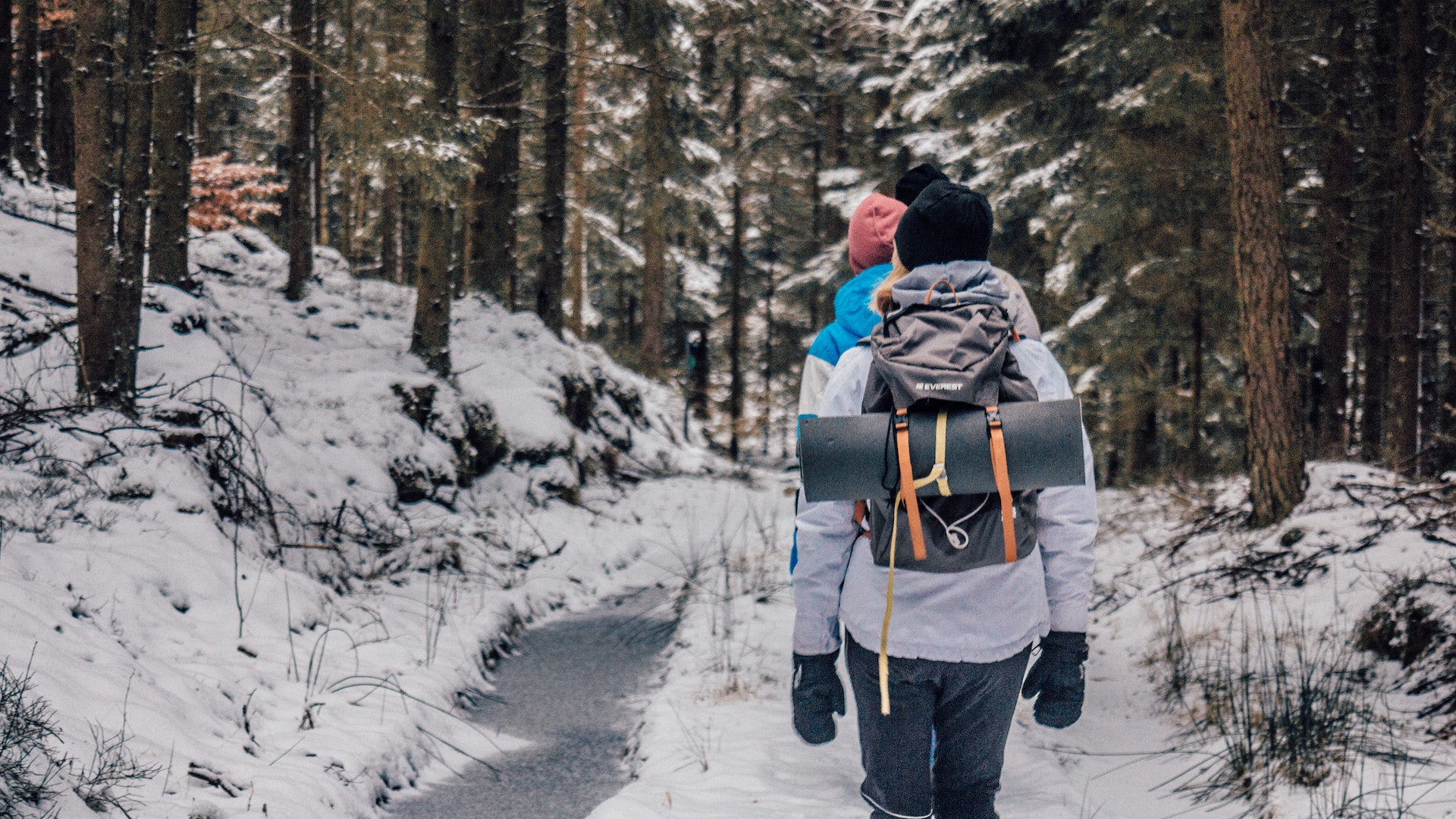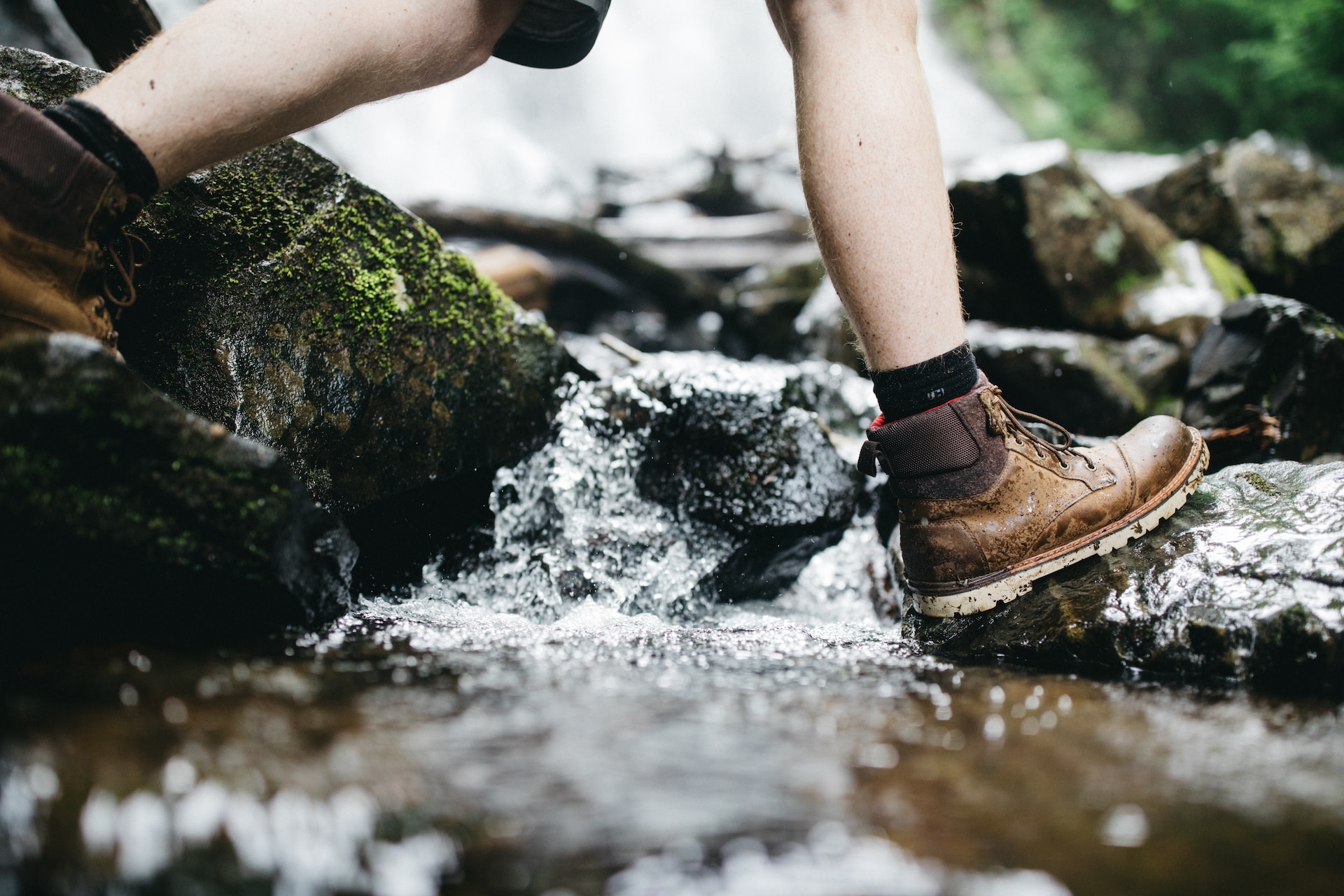Spring hiking is getting underway, and we couldn’t be more excited! But given that this winter was such a doozy, we have some special tips to make your outdoor adventures safe and enjoyable this year.
Take a look at these 9 tips for hiking in the Eastern Sierra in 2023.
Stop in at the Mammoth Lakes Welcome Center and Ranger Station
Unfortunately, many of the most popular trails up here are still closed. And because of the unusually deep snowpack, that’s not expected to change any time soon.
But the good news is, there are many more hiking options in Inyo and Mono counties for you to explore. And the best way to learn about current trail conditions is to stop in at the Mammoth Visitor Center. There, you can ask a ranger about which trails are currently dry and accessible.
Don’t hike alone
Hiking with a buddy is alway recommended, but this year it’s especially important. With this much water, mud, and snow, you’ll want someone there who can pull you out of a potentially dangerous situation.
Be aware of spring snow hazards
In many cases, you can hike a trail that still has snow on it. But, there are a few things you should be aware of:
-
Snow melts from the ground up. Because of the way that snow naturally melts,what you see on the trail isn’t always what it seems. There could be air gaps under the surface of snow, creating unstable conditions.
-
Packed snow is slippery. You can usually get a good grip on fresh fluffy snow. But snow that’s sunk and compacted over time will be much less forgiving.
-
Even minor postholing can be exhausting and potentially dangerous. Postholing is simply a fancy term for when your foot breaks the surface of the snow. No matter what it’s called, this phenomenon is common when hiking in the spring. And even if you sink down just a few inches, you’ll be using more energy than normal, not to mention putting yourself at risk of unknowingly walking on sharp branches or rocks.
-
Tree wells continue to be dangerous. After a few hours on the trail, you’ll probably need to relieve yourself. When you’re looking for the right tree, make sure it’s not surrounded by snow. Tree wells continue to be dangerous in spring, made even more dangerous when the snow is compacted and slippery.

Use trekking poles
Trekking poles are a useful safety tool all year long, but especially during spring. For one thing, they can provide balance and grip when you’re going over slippery or unstable surfaces. This will be important when you’re crossing streams or muddy parts of the trail.
You can also use trekking poles to test the depth of water and snow. In areas where you think there might be an unstable snow bridge, you can use your pole to prod and get a better sense of whether it’s safe to cross.
Opt for shoes with excellent grip
It’s probably obvious by now that your balance will be challenged when enjoying spring hiking in the Eastern Sierra. So, you’ll definitely want a good hiking boot.
Now, there are some hiking pros that suggest trail running shoes for spring hiking as they’ll dry off quickly if you step in a creek or puddle. But, we like the ankle protection of a traditional hiking boot. With something a bit sturdier, you’ll feel more confident in the variable terrain that comes with spring hiking.
Ultimately, the choice is yours. Just make sure that you use a shoe with excellent grip.
Wear sunglasses and sunscreen
No matter what time of year it is, you’ll see experienced hikers in the Eastern Sierra wearing sun protection. Not only will the UV exposure intensify as spring goes on, but there’s also enough snow to cause glare. So, a good pair of sunglasses and your preferred sunscreen are necessary.
Steer clear of cotton clothing
Here in the Sierra Nevada, we’re lucky to have drier conditions than many popular spring hiking destinations in the rest of the country. So, you don’t usually have to worry about getting caught in the rain on the trail (of course, do your due diligence and check the weather forecast first!) But in the case that you fall in a stream, you won’t want to wear a garment that will stay soggy for the rest of the day.
Cotton hiking gear, for instance, is notorious for trapping moisture. Stick instead with polyester and nylon, or, the gold standard of hiking gear, breathable merino wool.
Practice safe water crossings
Water crossings are by far the most dangerous aspect of spring hiking. And, given how much snowmelt we’re expecting this year, they’ll be fairly unavoidable. So, you’ll want to make sure you’re crossing with care. Here are a few tips on how to navigate streams from the National Park Service:
-
Cross at straight sections rather than bends. Creeks at bends tend to be deeper, so stick with straighter sections.
-
Wide shallow channels are better than deep shorter ones. Water that is spread out over a surface will be easier to cross than areas that are a shorter distance but deeper and swifter.
-
Look up and down stream. Many of the trails around Mammoth Lakes are designed to cross streams at the safest sections. But as we’ve said, this year, the conditions will be different. Take a look up and down stream to find better crossing options and avoid potential hazards.
-
Throw in a stick to gauge speed. The NPS suggests that you toss a stick upstream and then walk along with it for a short time to gauge how fast it’s floating downriver. If you can’t keep up, the current is likely too fast for a safe crossing.
-
Use your trekking pole. When crossing, you always want to have at least two points of contact with the ground. This will give you stability and prevent a fall if one of your points of contact slips.
-
Cross one at a time. When hiking out of Mammoth Lakes, you’re not going to be facing the conditions that would be necessary for group crossings (i.e. very wide, slow moving rivers.) Instead, it’s better to have one person on solid ground while the other crosses. The person waiting to cross or who has already crossed should be there to guide their hiking buddy and provide assistance if necessary.

Be extra bear aware
Finally, we should talk about spring wildlife! In addition to seeing more birds, chipmunks, and Mule Deer, you may come across bears as they emerge from their winter dens.
Always practice bear safety, such as properly storing your food and keeping dogs on leash while you hike. If you do come across a bear, keep a safe distance and make plenty of noise.
Stay safe out there!
Spring hiking is going to look different in 2023. But if you can plan ahead, wear the proper gear, and bring an extra dose of caution, you can enjoy a spectacular season.
Looking for a condo for your hiking home base? Take a look at the units we have available for your next trip to Mammoth Lakes!
